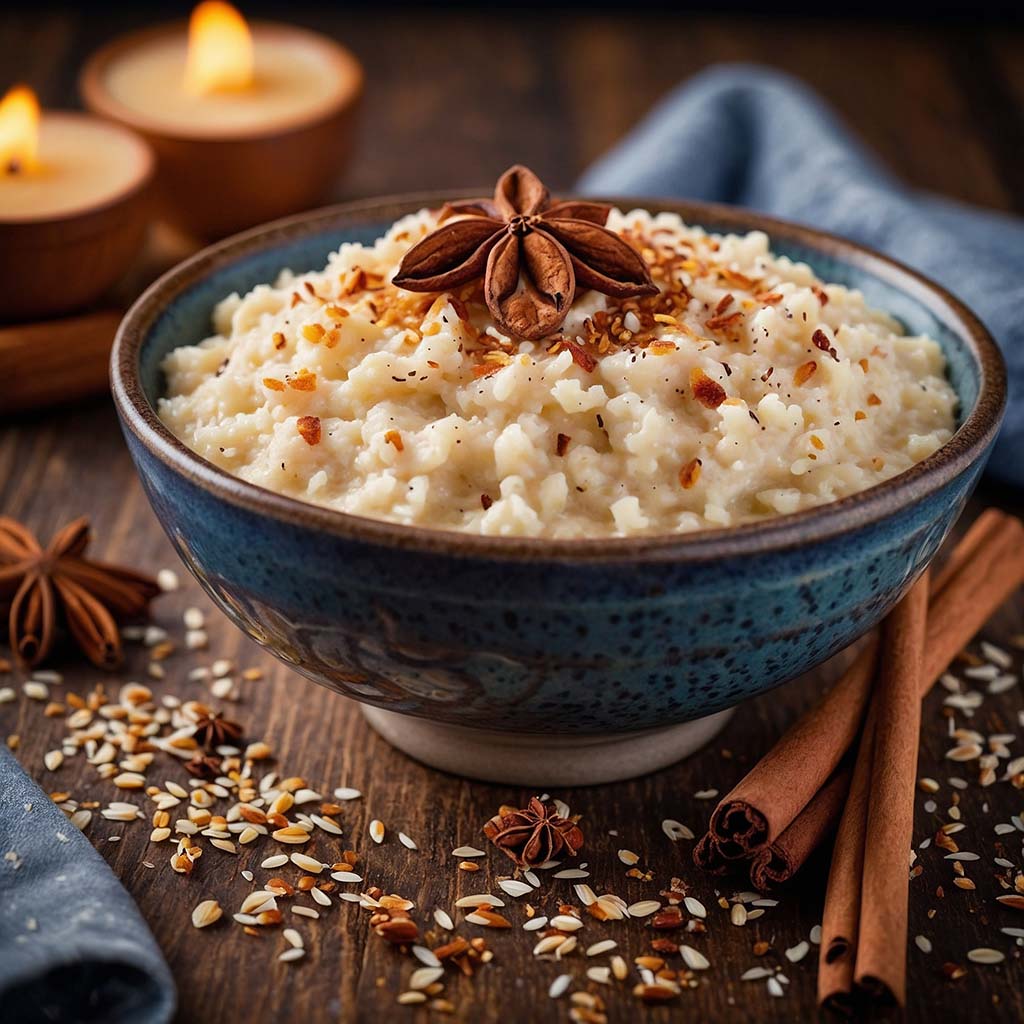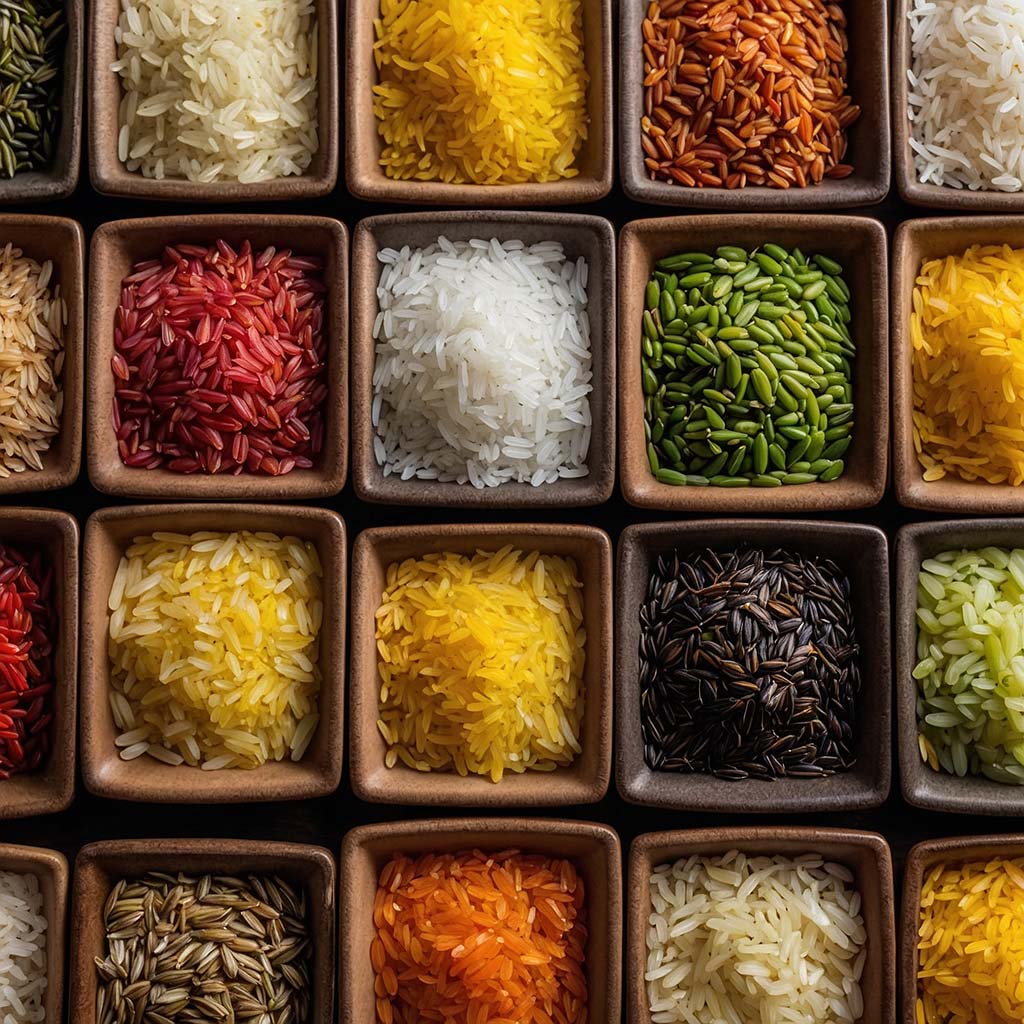Is Rice Gluten Free? Exploring Rice as a Gluten-Free Staple, Varieties, and Creative Uses in Meals
Rice is a dietary staple globally, cherished for its versatility and simplicity. For those with gluten sensitivities or celiac disease, the question "Is rice gluten-free?" More than a curiosity - it's a health issue. Thankfully, in its natural form, Rice is indeed gluten-free, making it an excellent choice for those needing or choosing to avoid gluten.

In this comprehensive guide, we'll delve into the gluten-free nature of Rice, explore the various types of Rice available, and provide creative ideas for incorporating this nutritious grain into your meals.
Rice is a naturally gluten-free grain, much like other staples that are perfect for a gluten-free breakfast.
Jump to:
- Understanding Gluten and Its Effects
- Is Rice Gluten-Free? The Answer Explained
- Varieties of Rice: A Gluten-Free Palette of Flavors and Textures
- Creative Ways to Use Rice in Gluten-Free Meals
- Rice as a Base for Bowls and Salads
- Rice in Stir-Fries and Fried Rice
- Rice as a Gluten-Free Substitute
- Rice in Soups and Stews
- Rice-Based Desserts
- Tips for Cooking Perfect Rice Every Time
- Conclusion
- FAQs
Understanding Gluten and Its Effects
Before diving into Rice, it's essential to understand gluten and its impact on the body. Gluten is a protein found in wheat, barley, and rye. For most people, consuming gluten is harmless, but for those with celiac disease, non-celiac gluten sensitivity, or wheat allergies, ingesting gluten can trigger a range of unpleasant symptoms, from digestive issues to more severe health problems.
For people with these conditions, avoiding gluten is not just a dietary preference but a medical necessity. That's where naturally gluten-free grains like Rice come into play. But is all Rice safe for those with gluten sensitivities? Let's explore.
Is Rice Gluten-Free? The Answer Explained
Is Rice gluten-free? The short Answer is yes but with some caveats. In its natural state, all rice types—white, brown, wild, and others—are inherently gluten-free. However, cross-contamination can occur during processing, packaging, or cooking, particularly when Rice is processed in facilities that also handle gluten-containing grains.
To ensure the Rice you consume is genuinely gluten-free, it's essential to check labels for any cross-contamination warnings and opt for brands that specifically label their products as gluten-free. This precaution is particularly crucial for those with celiac disease or severe gluten sensitivity, where even trace amounts of gluten can cause adverse reactions.
Varieties of Rice: A Gluten-Free Palette of Flavors and Textures
Rice comes in a stunning array of varieties, each with unique flavor, texture, and culinary applications. Here, we'll explore some of the most common and popular types of Rice, which are naturally gluten-free.
White Rice
The most common type of rice found in kitchens worldwide is white rice. It has had its husk, bran, and germ removed, resulting in a soft, fluffy texture and a relatively mild flavor. White rice cooks quickly, making it a convenient option for various dishes, from simple side dishes to more complex recipes like pilafs and risottos.
Nutritional Value: White Rice is less nutrient-dense than brown or wild Rice; it is enriched with vitamins and minerals, such as folic acid and iron, making it a valuable part of a balanced diet.
Brown Rice
A whole grain with only the outer husk removed, leaving the bran and germ intact, is what brown rice is. This results in a chewier texture and a nuttier flavor than white Rice. Brown Rice is a richer source of fiber, vitamins, and minerals, making it a more nutritious option for those looking to incorporate more whole grains into their diet.
Nutritional Value: Brown Rice is an excellent source of magnesium, phosphorus, selenium, thiamine, and niacin, as well as dietary fiber. This makes it a heart-healthy choice that can support digestion and help manage weight.
Wild Rice
Despite its name, wild rice is not technically Rice but a seed of aquatic grasses. It has a distinctive, nutty flavor and a chewy texture, often used in pilafs, salads, and stuffing. Wild Rice is higher in protein and fiber than white or brown Rice, making it a nutritious and hearty option for gluten-free meals.
Nutritional Value: Wild Rice is a powerhouse of nutrients, including protein, dietary fiber, and antioxidants. It also provides a significant amount of zinc, magnesium, and phosphorus, making it an excellent choice for enhancing overall nutrition.
is basmati rice gluten free?
Basmati rice is a long-grain rice variety known for its fragrant aroma and slightly nutty flavor. From India and Pakistan, basmati rice is often used in Middle Eastern and South Asian cuisines. It pairs well with rich, spiced dishes like curries and biryanis.
Nutritional Value: Basmati rice is lower on the glycemic index than other types of Rice, which means it has a gentler effect on blood sugar levels, making it a good option for people managing diabetes.
is jasmine rice gluten free?
Jasmine rice is another long-grain aromatic rice grown mainly in Thailand. It is characterized by its delicate floral aroma and slightly gooey texture when cooked. Jasmine rice is perfect for Thai curries, stir-fries, and other Asian-inspired recipes.
Nutritional Value: Similar to basmati rice, jasmine rice is also relatively low in fat and cholesterol-free. It's a good source of carbohydrates and provides some essential nutrients like folic acid and B vitamins.
Black Rice (Forbidden Rice)
Black rice, also known as forbidden Rice, is a striking variety with a deep purple-black color. It has a slightly sweet, nutty flavor and a chewy texture. Historically, it was reserved for Chinese royalty. Still, today, it's celebrated for its high nutritional value and is used in various dishes, from savory to sweet.
Nutritional Value: Black Rice is rich in anthocyanins, antioxidants that give it its distinctive color. It is also high in fiber, iron, and vitamin E, making it one of the most nutrient-dense rice varieties.
Red Rice
Red rice is another whole-grain variety characterized by its reddish-brown hue, which comes from its high anthocyanin content. It has a robust, earthy flavor and a slightly chewy texture. Red Rice is often used in salads, pilafs, and as a side dish to add color and nutritional value.
Nutritional Value: Like black Rice, red Rice is packed with antioxidants, along with a good amount of fiber, iron, and magnesium, making it a healthful addition to any gluten-free diet.
Creative Ways to Use Rice in Gluten-Free Meals
Rice's versatility makes it an ideal foundation for countless gluten-free recipes. Whether preparing a simple side dish or a more elaborate main course, Rice can be adapted to suit various flavors and cuisines. Here are some creative ways to incorporate Rice into your gluten-free meals.
Rice as a Base for Bowls and Salads
One of the simplest ways to enjoy Rice is by using it as a base for bowls and salads. Start with a layer of your favorite brown, white, or wild rice variety and top it with fresh vegetables, proteins, and sauces. Bowls like these are delicious and packed with nutrients, making them perfect for a quick, balanced meal.
Ideas:
- Brown Rice Buddha Bowl: Top brown Rice with roasted vegetables, chickpeas, avocado, and a tahini dressing.
- Wild Rice Salad: Combine wild Rice with cranberries, walnuts, and a light vinaigrette for a hearty, gluten-free salad.
Rice in Stir-Fries and Fried Rice
Rice is a critical ingredient in many Asian-inspired dishes, particularly stir-fries and fried Rice. These dishes are quick to prepare and allow for a lot of creativity with ingredients. Use leftover Rice to create a flavorful fried rice dish, or cook fresh Rice to pair with stir-fried vegetables and proteins.
Ideas:
- Vegetable Fried Rice: Use jasmine rice for a classic vegetable fried Rice with peas, carrots, and soy sauce.
- Basmati Stir-Fry: Combine basmati rice with stir-fried chicken, broccoli, and a garlic-ginger sauce for a satisfying meal.
Rice as a Gluten-Free Substitute
Rice can also be used as a gluten-free substitute in recipes that traditionally use gluten-containing grains. For example, Rice can replace barley in soups, risotto, and baked goods.
Ideas:
-Risotto Rice: Use arborio rice to create a creamy, gluten-free risotto with mushrooms and Parmesan.
- Rice Flour Pancakes: Swap wheat flour for rice flour in pancake recipes for a gluten-free breakfast option.
Rice in Soups and Stews
Adding Rice to soups and stews can create a more filling and hearty dish. Rice absorbs flavors well, making it a perfect addition to broths and thick, comforting stews.
Ideas:
- Chicken and Rice Soup: A classic combination of white Rice, chicken, and vegetables in a savory broth.
- Seafood Stew with Wild Rice: Incorporate wild Rice into a seafood stew for added texture and nutrition.
Rice-Based Desserts
Rice is not just for savory dishes—it can also be the star of many delicious desserts. From traditional rice pudding to more adventurous sweet rice dishes, there are plenty of ways to satisfy your sweet tooth while keeping your diet gluten-free.
Ideas:
- Rice Pudding: A creamy dessert made with milk, sugar, and Vanilla served warm or chilled.
- Mango Sticky Rice: A popular Thai dessert with sticky Rice, coconut milk, and fresh mango slices.

Tips for Cooking Perfect Rice Every Time
Cooking Rice can be tricky if you must familiarize yourself with the process. Still, you can consistently cook perfectly cooked Rice with a few simple tips.
Use the Right Water-to-Rice Ratio
The ratio of water to rice is necessary to achieve the desired consistency. For white Rice, a standard ratio is 2 cups of water for every 1 cup of Rice. Brown Rice typically requires more water (about 2.5 cups per cup of Rice) and a longer cooking time. Experts often recommend using a ratio of 1.5 cups of water per cup of rice for aromatic varieties like basmati and jasmine.
Rinse the Rice
Rinsing the rice before cooking it removes excess starch, which can make the rice gummy. This step is crucial for long-grain varieties like basmati and jasmine. Rinse the rice under cool water till the water runs clear.
Let the Rice Rest
Let the rice rest with the lid on for 5-10 minutes after cooking, then fluff it with a fork. This resting period evenly redistributes the moisture, resulting in fluffier rice.
Conclusion
Rice is a versatile, naturally gluten-free grain that can play a central role in a balanced, gluten-free diet. From the fluffy simplicity of white Rice to the nutty richness of wild and brown varieties, Rice offers an array of textures and flavors that can complement any meal. You can enjoy a wide range of delicious, gluten-free dishes by understanding the different types of Rice and how to use them creatively.

FAQs
Yes, all-natural forms of Rice are gluten-free, including white, brown, and wild Rice. Rice does not contain the gluten protein found in wheat, barley, or rye, making it safe for those with gluten sensitivities.
While Rice is naturally gluten-free, cross-contamination can occur during processing, packaging, or cooking. It's crucial to choose brands that label their Rice as gluten-free, especially for individuals with celiac disease or severe gluten sensitivity.
All types of Rice are suitable for a gluten-free diet. Many people often prefer brown rice for its higher nutritional content, including fiber, vitamins, and minerals. However, the choice depends on personal preference and the specific dietary benefits you're seeking.
Yes, you can use rice as a substitute in many recipes that traditionally call for gluten-containing grains. This includes dishes like risottos, soups, pilafs, and some baked goods, making Rice a versatile and gluten-free alternative.
To prevent cross-contamination, store rice in a sealed container in a cool, dry place, away from gluten-containing foods. This helps maintain its gluten free status and ensures its freshness.
Flavored or pre-seasoned Rice may contain gluten or be at risk of cross-contamination. Always check the label for gluten-containing ingredients or warnings about potential cross-contamination, particularly if you have celiac disease or severe gluten sensitivity.
SOURCES:
Beyond Celiac: “Is Rice Gluten-Free?”
Harvard T.H. Chan School of Public Health – The Nutrition Source: “Rice.”
NHS: “Celiac disease – Treatment.”
Oldways Whole Grains Council: “Types of Rice.”
Food Print: “Real Food Encyclopedia: Wild Rice.”
Celiac Disease Foundation: “Sources of Gluten.”
